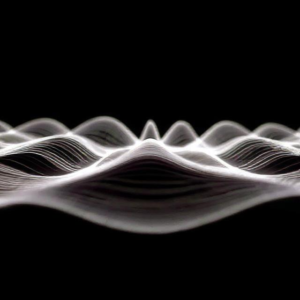1. What is Interference?
Interference is a phenomenon that occurs when two or more waves meet and combine. The result of this meeting can either amplify or cancel out the waves, depending on how they line up.
In simple terms:
- Interference happens when waves (like light, sound, or water waves) overlap with each other.
- The result can either be a stronger wave (constructive interference) or a weaker wave (destructive interference).

2. What are Interference Fringes?
In light interference, when light passes through two slits or openings, it creates patterns of bright and dark bands called interference fringes. These patterns are a result of light waves overlapping and interfering with each other.
- Bright fringes occur where the waves reinforce each other (constructive interference).
- Dark fringes occur where the waves cancel each other out (destructive interference).
The fringes are typically seen in experiments like the famous double-slit experiment, where light passes through two closely spaced slits and creates a pattern of alternating bright and dark bands on a screen.
3. Interference of Light:
When it comes to light interference, it’s all about how light waves interact with each other. Light can act like a wave, and when two light waves meet, they can interfere in different ways.
Examples of Light Interference:
- Double-slit Experiment: When light passes through two narrow slits and hits a screen, it creates a series of bright and dark stripes or interference fringes. This is one of the classic examples of light interference.
- Thin-film interference: You can see colorful patterns on soap bubbles or oil slicks on water. These colors are a result of light waves interfering with each other after reflecting off the thin film.
Types of Interference in Light:
- Constructive Interference:
- When two light waves meet in phase (the peaks and troughs align), they add up, and the intensity of the light increases.
- This produces a bright fringe (a bright band of light).
- Destructive Interference:
- When two light waves meet out of phase (the peak of one wave aligns with the trough of another), they cancel each other out.
- This produces a dark fringe (a dark band with no light).
Conditions for Light Interference:
For light interference to occur, the light waves need to be coherent. This means:
- The light waves must have a constant phase relationship (they should maintain a steady pattern of crests and troughs).
- The light should be of the same wavelength or color for the effect to be noticeable.
4. Interference of Waves (General):
Interference is not just a property of light. It can occur with any type of wave, such as sound waves, water waves, or even seismic waves. The basic principle is the same — when two waves meet, they combine to form a new wave.
Types of Interference in Waves:
- Constructive Interference:
- When two waves meet in such a way that their amplitudes add together (they reinforce each other).
- The result is a larger wave with a bigger amplitude.
- Destructive Interference:
- When two waves meet in such a way that their amplitudes cancel each other out.
- The result is a smaller wave (or no wave at all).
Examples of Wave Interference:
- Sound Waves: Two sound sources can interfere with each other. For example, if two speakers emit sound waves in the same frequency but are out of phase, the sound could be quieter (destructive interference) or louder (constructive interference).
- Water Waves: If you drop two stones into a pond, the ripples they create will interfere with each other, creating areas of calm (destructive interference) and areas of higher waves (constructive interference).
5. Interference Fringes in Detail:
When light or any other wave undergoes interference, the fringes (bands) can be seen as patterns on a screen. These patterns depend on:
- The wavelength of the light or wave.
- The distance between the slits or sources (for light interference).
- The distance to the screen or observation point.
In a typical setup, such as the double-slit experiment, you can calculate the position of the interference fringes using the formula:
Where:
is the distance between adjacent fringes.
is the wavelength of light.
is the distance from the slits to the screen.
is the distance between the two slits.
This formula helps predict the spacing of the interference fringes based on the properties of the wave and the experimental setup.
6. Key Points to Remember:
- Interference happens when two or more waves meet and combine.
- Constructive interference makes waves stronger (brighter light or louder sound).
- Destructive interference makes waves weaker (darker light or quieter sound).
- Interference fringes are patterns of bright and dark bands created by the interference of light waves.
- Conditions for interference: Waves must be coherent (having a consistent phase relationship) and have the same wavelength.
Conclusion:
Interference is a fundamental concept in physics, describing how waves interact with each other. In the case of light, this can lead to fascinating patterns of interference fringes, which reveal the wave nature of light. The principles of interference apply to all types of waves, including sound and water waves.
Tags: Amplitude, bright fringes, coherence, coherent waves, constructive interference, dark fringes, destructive interference, diffraction, double-slit experiment, Experimental physics, fringe formula, fringe spacing, in-phase, Interference, interference conditions, interference fringes, interference pattern, light interference, Light Waves, oil slicks, optical interference, out-of-phase, phase relationship, ripple patterns, same wavelength, screen distance, Seismic Waves, slit distance, soap bubbles, sound interference, Sound Waves, thin-film interference, water interference, Water Waves, wave behavior, wave cancellation, wave interaction, wave nature of light, wave overlap, wave properties, wave reinforcement, wave superposition, wavelength, Δy = λL/d


